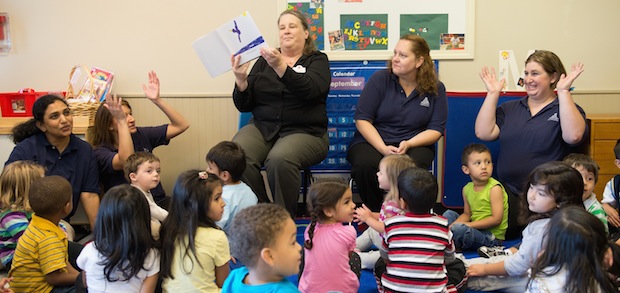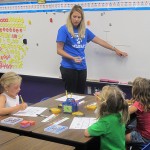How Much We (Don't) Know About Pre-K Students
There’s not a lot of disagreement about the critical role preschool plays in helping students develop into successful learners — and even, eventually, successful employees. But there’s also not a lot of data available about publicly-funded preschool programs.
That’s a fundamental problem, writes Alex Holt of The New America Foundation:
Some states with state-funded pre-K programs do not make data available on some of the most basic information, such as how many children are enrolled in a given district. And even those that do provide such data are missing details on whether their pre-K programs are full- or half-day programs…
The data also illustrate the difficulty in providing a full picture of local pre-K access when many pre-K programs are run by community-based organizations (CBOs), such as non-profit child care centers, that are not organized along school-district lines…
This lack of data carries serious consequences for equity in educational opportunities and could affect children’s academic growth. For example, if teachers and school leaders don’t know what interventions children receive before they enter kindergarten, it is difficult for them to best target their instruction to students’ needs.
Ironically enough, Holt wrote this on the occasion of his employer’s unveiling of a new online data center. The tool allows users to sort through, Holt says, what (little?) data is available.
Holt’s point is somewhat moot in Indiana, which is one of four U.S. states without a Pre-K program funded by state government. However, there are more than 32,000 Indiana children enrolled in federally-run preschool — about 13,500 in Head Start and about 18,700 in programs funded by the Individuals With Disabilities Education Act.
Separate numbers from the Anne E. Casey Foundation show 48 percent of Indiana children of Pre-K age do not attend preschool, a rate topped by only six other states.
But the need for data goes deeper than demographics. As Indy Star reporter Scott Elliot blogs:
Among some of the examples… of questions we should be able to, but so far cannot, answer: How many Hoosier children skip kindergarten? How do they compare with their peers on tests of basic school readiness? What sorts of early learning experiences best correlate with success later when they begin taking state tests at third grade?
All these questions could be answered if the state’s very high quality kindergarten readiness assessment — ISTAR-KR — was used by every school district and students tracked from kindergarten forward.


